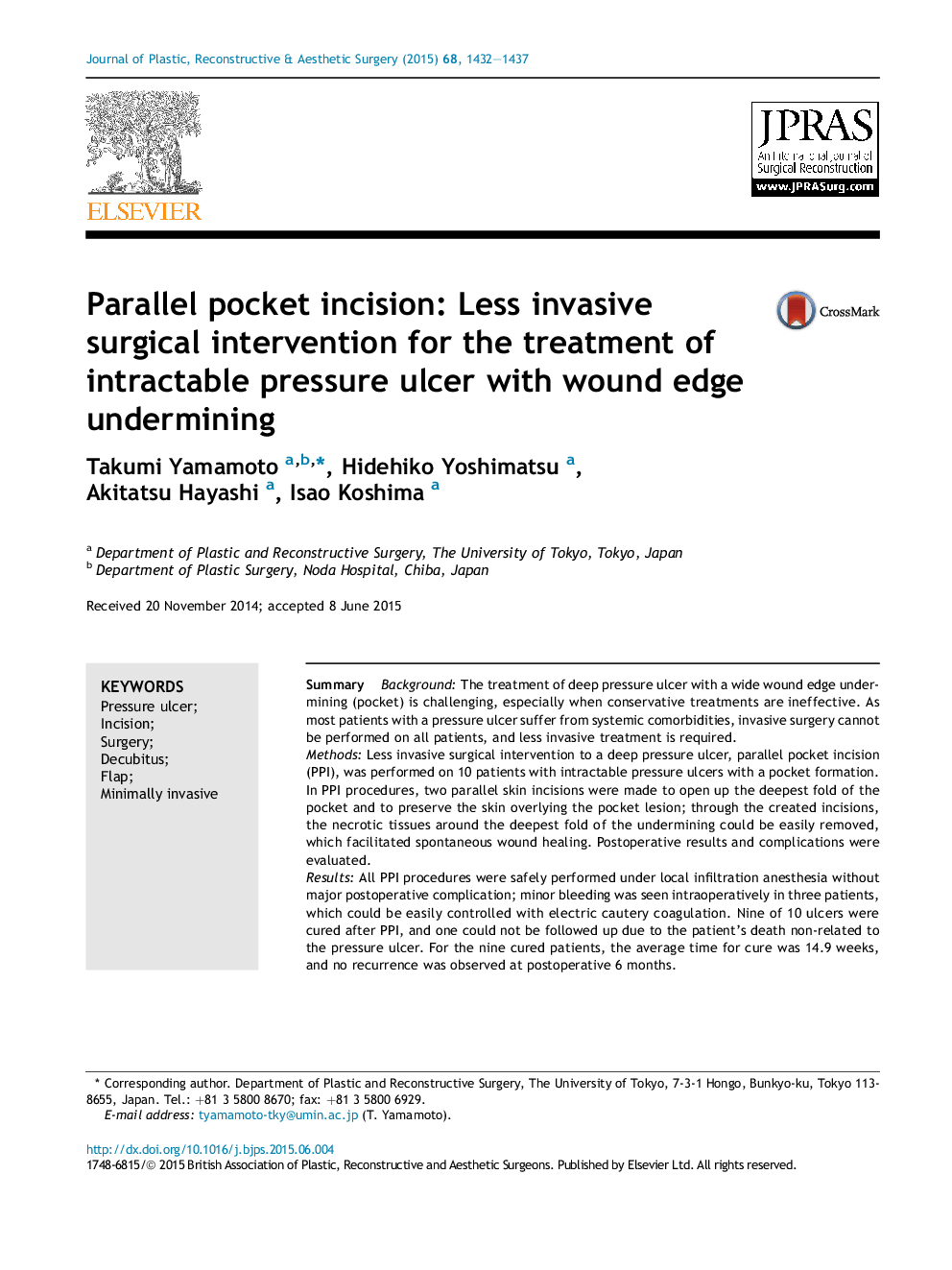| Article ID | Journal | Published Year | Pages | File Type |
|---|---|---|---|---|
| 4117692 | Journal of Plastic, Reconstructive & Aesthetic Surgery | 2015 | 6 Pages |
SummaryBackgroundThe treatment of deep pressure ulcer with a wide wound edge undermining (pocket) is challenging, especially when conservative treatments are ineffective. As most patients with a pressure ulcer suffer from systemic comorbidities, invasive surgery cannot be performed on all patients, and less invasive treatment is required.MethodsLess invasive surgical intervention to a deep pressure ulcer, parallel pocket incision (PPI), was performed on 10 patients with intractable pressure ulcers with a pocket formation. In PPI procedures, two parallel skin incisions were made to open up the deepest fold of the pocket and to preserve the skin overlying the pocket lesion; through the created incisions, the necrotic tissues around the deepest fold of the undermining could be easily removed, which facilitated spontaneous wound healing. Postoperative results and complications were evaluated.ResultsAll PPI procedures were safely performed under local infiltration anesthesia without major postoperative complication; minor bleeding was seen intraoperatively in three patients, which could be easily controlled with electric cautery coagulation. Nine of 10 ulcers were cured after PPI, and one could not be followed up due to the patient's death non-related to the pressure ulcer. For the nine cured patients, the average time for cure was 14.9 weeks, and no recurrence was observed at postoperative 6 months.ConclusionsPPI is a simple, technically easy, and less invasive surgical intervention to an intractable pressure ulcer with a pocket, which can be safely performed under local infiltration anesthesia even on a patient with severe systemic comorbidities.
